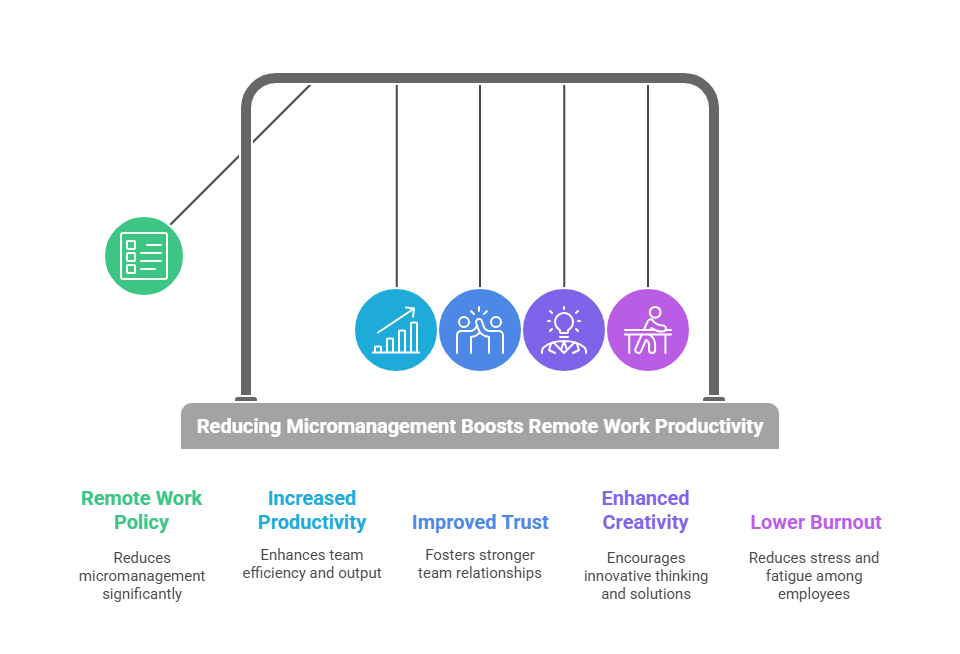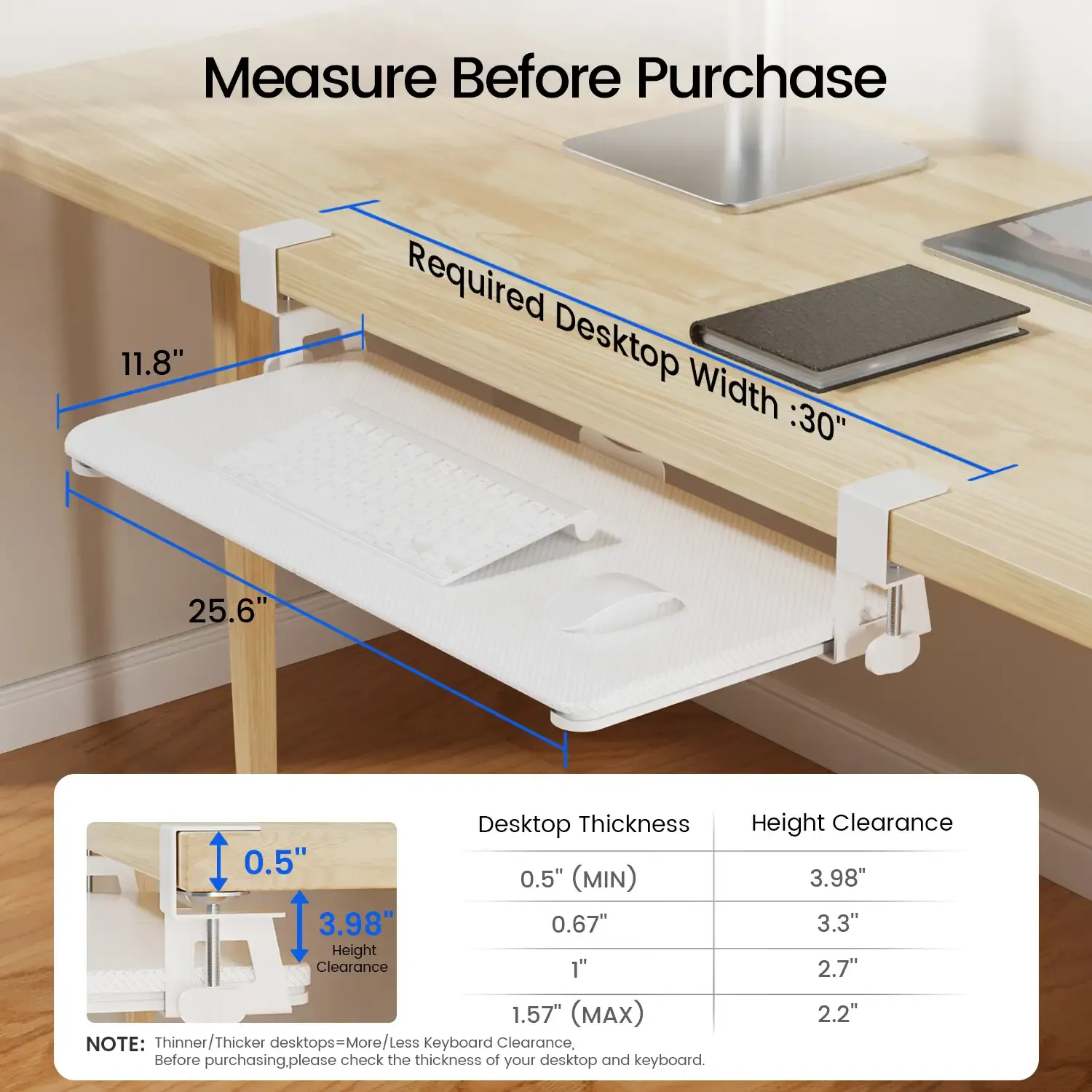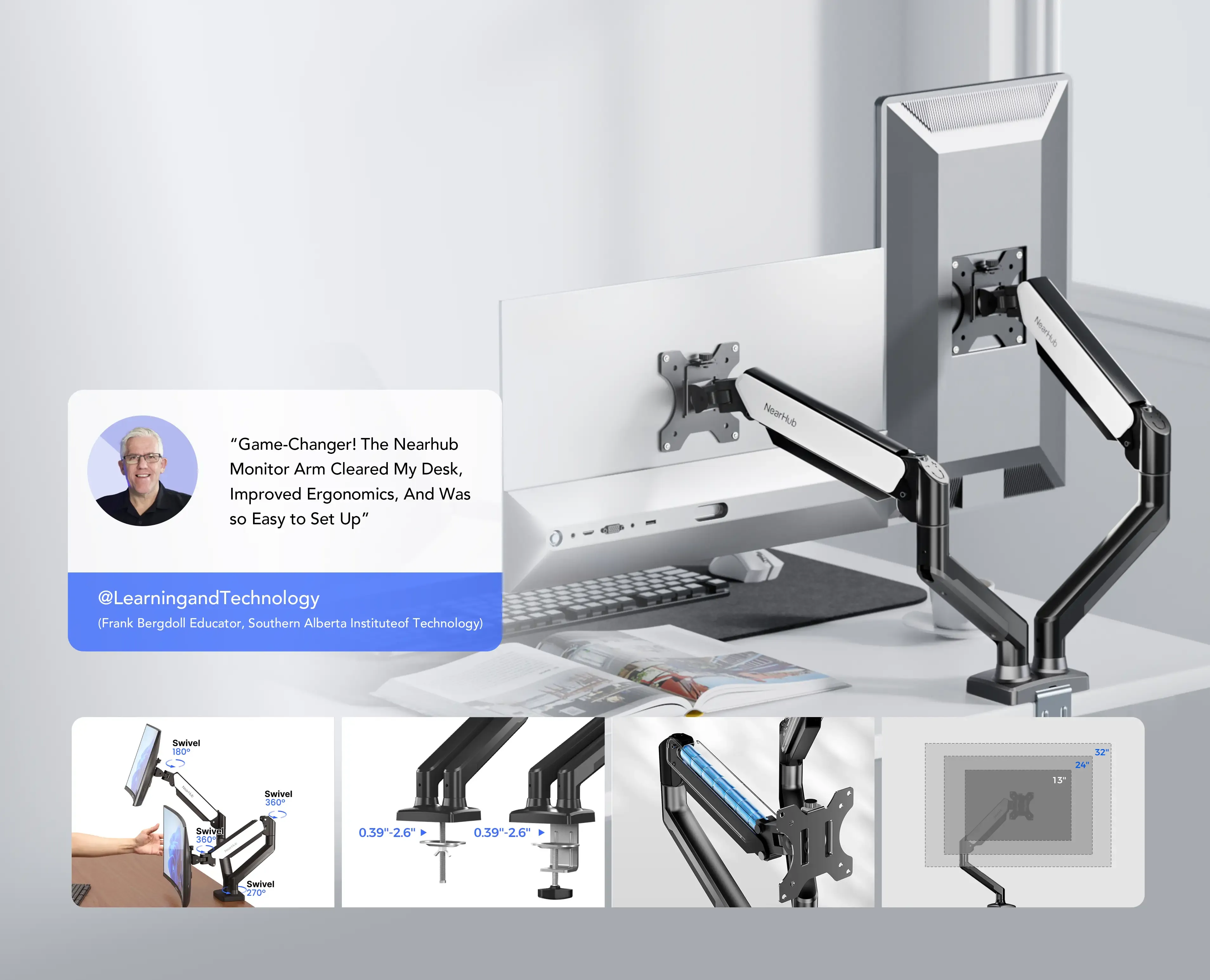Learn how the 2025 remote work policy cuts micromanagement by 65% using flexible schedules, task ownership, and structured check-ins. Includes tips for ergonomic tools and mental health to build a productive, autonomous team.
As remote work continues to redefine the modern workplace, many managers and employees are looking for ways to improve productivity without resorting to micromanagement. Micromanaging can quickly lead to burnout, decreased motivation, and a lack of trust between teams and their leaders. In fact, remote work productivity often takes a hit when there’s a constant over-shoulder check, which stifles creativity and autonomy.

So, how do you reduce micromanagement while ensuring your team stays on track? The solution lies in a clear and effective remote work policy template. In 2025, this template has proven to reduce micromanagement by 65%, and it’s transforming how companies approach remote work.
Let’s dive into the key elements of this remote work policy template, how it helps businesses grow, and why it’s essential for fostering a more productive and trust-filled work environment.
Why Do You Need a Remote Work Policy Template?
Remote work is here to stay, and without a hybrid remote work policy template, things can get chaotic. The flexibility that remote work offers can be a double-edged sword. Without a structure, employees might struggle to maintain focus, and managers may feel the need to check in too often. This leads to a micromanagement trap.
What’s the solution?
A well-crafted remote work policy template provides clarity around expectations, responsibilities, and communication. It ensures that everyone knows their roles, understands the tools they'll be using, and is on the same page about how to collaborate effectively. The result? Less micromanaging, more autonomy, and a team that works in harmony, whether they're in the office or at home.
What Makes This Remote Work Policy Template Effective?
A remote work policy template is not just a bunch of rules—it’s a framework that helps both employees and employers succeed. Here’s a breakdown of the key components that make this remote work policy template so effective:

- Clear Communication Guidelines
- When working remotely, communication is everything. However, different types of communication are needed for different situations. The policy outlines which tools to use for instant messaging, video calls, emails, and project updates. For instance:
- Slack or Teams for quick questions.
- Emails for detailed, formal communication.
- Zoom or Google Meet for team meetings and collaboration.
- Setting clear guidelines helps reduce the chaos of messages piling up in various places and makes communication more efficient. These communication guidelines are part of the overall remote work policy template, ensuring a smoother workflow for the entire team.
- When working remotely, communication is everything. However, different types of communication are needed for different situations. The policy outlines which tools to use for instant messaging, video calls, emails, and project updates. For instance:
- Set Working Hours with Flexibility
- One of the beauties of remote work is flexibility. However, that flexibility can often lead to confusion about availability. This remote work policy template strikes a balance by defining core working hours, like 10 AM to 3 PM, during which all team members should be available for collaboration. Outside of these hours, employees have the freedom to adjust their schedules to fit personal commitments.
- Flexibility means trust—and that trust reduces the urge for managers to micromanage. Employees feel empowered to manage their time as long as they’re meeting their deadlines and expectations, which aligns perfectly with remote work productivity tips such as effective time management.
- Productivity Guidelines, Not Micromanagement
- A big part of micromanagement is trying to control every little action your team takes. The solution isn’t controlling; it’s setting remote work productivity tips that empower employees to manage their own work.
- For example, your policy might suggest using time management strategies like the Pomodoro Technique or apps like Toggl or Trello to track progress and tasks. You can also encourage employees to set goals at the beginning of each week and update their teams on progress through weekly reports. This way, employees remain accountable, and managers don’t need to check in constantly.
- Clear Task Ownership and Accountability
- Giving employees ownership of their work is one of the most effective ways to prevent micromanagement. This remote work policy template emphasizes the importance of task ownership—employees are responsible for their projects, and managers provide support, not oversight. Task ownership builds a sense of pride in the work, leading to better outcomes and less supervision.
- The policy outlines clear deliverables, timelines, and milestones so employees know what’s expected. This allows them to work independently while staying aligned with company goals.
- Encouraging Regular Check-ins Without Micromanaging
- The policy should suggest regular check-ins, but these should be focused on the progress of the work rather than on daily minutiae. These can include:
- Weekly team meetings for updates and collaboration.
- Monthly one-on-ones for personal development and feedback.
- Daily stand-ups (if needed) to keep things on track without intruding.
- This balance between autonomy and structure helps employees stay on course without feeling monitored all the time.
- The policy should suggest regular check-ins, but these should be focused on the progress of the work rather than on daily minutiae. These can include:
- Encourage Mental Health & Work-Life Balance
- Remote work can blur the lines between personal and professional life. This remote work policy template includes a focus on mental health by encouraging regular breaks, offering flexible working hours, and suggesting the use of mental health days when needed.
- Employees are more productive when they feel cared for and have a healthy work-life balance.
How Does This Policy Impact Productivity?
Implementing this remote work policy template can have a significant positive impact on productivity. Here’s how:
- Increased Employee Engagement
- When employees feel trusted to manage their own time, they’re more likely to engage in their work. Autonomy is a powerful motivator. People want to work for organizations that trust them to do their jobs well. When autonomy is part of your culture, employees will take ownership of their tasks and take more pride in their work.
- As a result, engagement levels increase, and employees feel more invested in the success of the company. This leads to better productivity and better outcomes across the board.
- Less Time Spent in Meetings
- Traditional office settings often have too many unnecessary meetings, which are time-sinks and productivity killers. By establishing clear expectations around communication, your policy cuts down on the need for constant check-ins and meetings.
- Employees know when they need to communicate, and managers know when it’s appropriate to have a meeting. Fewer meetings means more uninterrupted work time, and this can significantly improve productivity.
- Improved Focus
- One common misconception about remote work is that employees won’t stay focused. However, without the constant interruptions of office life and with clearer expectations for deliverables, remote employees can often get more done in less time.
- With remote work productivity tips like time-blocking and task prioritization, employees can schedule their work around their peak focus hours. This means that instead of spreading themselves thin across multiple tasks, they can deep-dive into one project at a time.
How to Support Your Team with the Right Tools
A successful remote work policy isn’t just about guidelines—it’s also about providing your team with the right tools. The right equipment and resources allow your team to work efficiently and feel comfortable in their space. Here are some essential tools that should be part of your remote work setup:
Ergonomic Desk Chairs for Comfort
A comfortable workstation is crucial for productivity. For employees with different needs, check out the ergonomic desk chair for short person. This chair is designed specifically for smaller frames, providing comfort and support during long working hours.
Ergonomic Desk Chairs for Bigger Frames
For those who need more support and comfort, our awesome office chairs is perfect. It offers superior comfort with ample space and a sturdy design for larger individuals.
Ergonomic Under Desk Keyboard Trays for Better Posture
Maintaining proper posture is essential for long hours at the desk. The comfort tray can help reduce strain on your employees' wrists, neck, and back, ensuring they work comfortably and efficiently.
Dual Monitor Mounts for Improved Workflow
Having a multi-monitor setup can increase productivity, especially when working from home. Consider the dual computer monitor mounts, which offers flexibility and better organization for your remote workers.
With the right furniture and accessories, your team will have everything they need to be comfortable, productive, and efficient in their home office setups.
Frequently Asked Questions
Q1: How do I get started with creating a remote work policy template for my team?
Start by outlining your expectations for communication, availability, and deliverables. Then, include guidelines for autonomy and productivity. Keep it flexible but structured.
Q2: What should be included in a hybrid remote work policy template?
A hybrid remote work policy should include clear guidelines for when employees are expected to work in the office and when they can work remotely. It should also define expectations for communication, task ownership, and performance metrics.
Q3: How do I ensure my remote work policy helps increase productivity without micromanaging?
Focus on remote work productivity tips such as setting clear goals, offering flexibility, and giving employees autonomy over their tasks. Avoid checking in too frequently, and trust your employees to get the work done.
Q4: Can the right furniture help reduce the need for micromanagement?
Absolutely! Investing in comfortable, ergonomic furniture like an ergonomic office chair or a good monitor setup will improve your team's health and productivity, leading to better work without the need for constant supervision.
Q5: What are some other remote work productivity tips?
Encourage regular breaks, the use of productivity tools, and clear task management. Using project management software like Trello or Asana helps teams stay organized and accountable.
Conclusion: Empower Your Remote Workforce with the Right Policy
As we continue to embrace remote work, the importance of a well-defined remote work policy template becomes increasingly clear. Not only does it establish expectations, but it also builds trust and encourages autonomy—two essential elements for a productive, happy, and motivated team. By adopting a hybrid remote work policy template and following remote work productivity tips, you can create an environment where your team feels empowered to manage their own time and work with minimal supervision.

Remember, reducing micromanagement isn’t just about cutting back on meetings or limiting check-ins. It’s about fostering a culture of trust, setting clear guidelines, and equipping your team with the right tools and resources to succeed. With the right remote work policy template in place, you’re not only reducing micromanagement by 65%—you’re also setting the stage for a more efficient, engaged, and happy remote workforce.
By following these guidelines and making thoughtful decisions about your team’s remote work setup, you’re not just managing a remote workforce—you’re empowering them to thrive. The future of work is flexible, and with the right remote work policy template, you’ll be ready for whatever comes next.












































